
With over 400 species of fish, the volcanic islands of Hawaii belong to the most impressive snorkel sites worldwide. After reviewing various snorkel locations on the Big Island, Maui, Kauai and Oahu, here are 17 reef fish you’ll probably be able to spot when snorkeling in Hawaii.
1. Bullethead Parrotfish
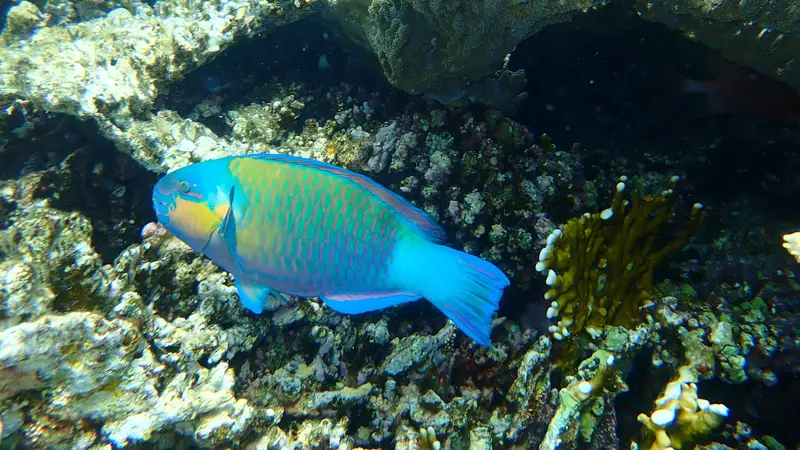
Let’s start with my most favorite Hawaiian fish, the parrotfish. Hawaiian parrotfish usually grow between 12 up to almost 28 inches (that’s about 30 – 70 centimeters). One interesting fact, is that male parrotfish live together with multiple females. Once the male dies, the most dominant female will switch its gender to become the new male of the group. A fascinating transition.
Have you ever heard those harsh scratchy sounds near a coral reef? Chances are a parrotfish nearby was aggressively eating algae and plants of the coral with its sharp solid teeth. During this process, small parts of the coral are chewed as well. These parts are finally released as tiny white sand particles, which is what we snorkelers often observe around an active reef.
There are 7 types of parrotfish in the Hawaiian waters. The one I show you in this picture is called the “Bullethead”. They enjoy both shallow and deeper coral reefs.
2. White Spotted Pufferfish (Blowfish)
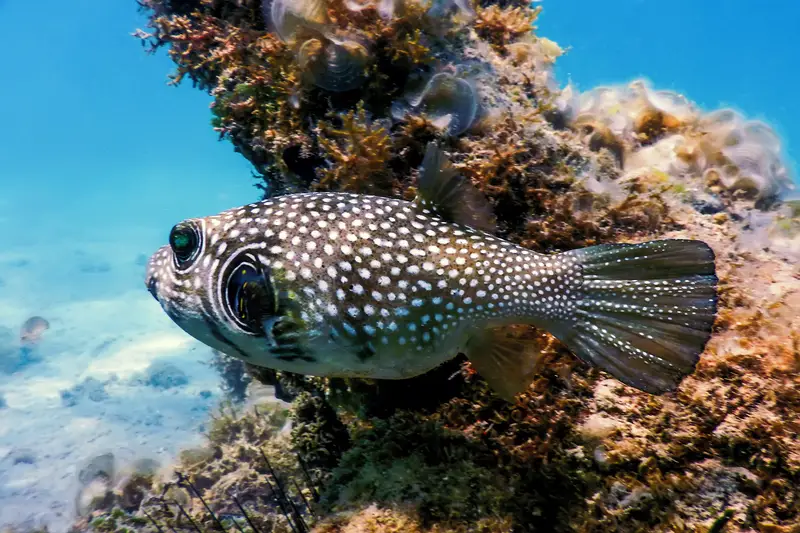
Another Hawaiian fish you’re very likely to spot is the pufferfish. Especially when snorkeling in Maui, expect to meet some of them during the day (that’s when they hunt for algae, worms and sponges). But they enjoy all Hawaiian waters. The spotted pufferfish can grow up to 20 inches (about 50 centimeters) and will catch your eye with its typical white spots on its brown body.
Pufferfish are also known as blowfish because of their ability to inflate their bodies. Their size can double or even triple whenever they feel threatened. By swallowing a good amount of water their flexible bodies blow up, which makes them less attractive for certain predators. Once their predator is gone, they return to their original size.
You’ll be able to spot them around reefs, close to the ocean floor. They’re not exactly fast swimmers but able to quickly change direction thanks to their flexible tail.
3. Moorish Idol
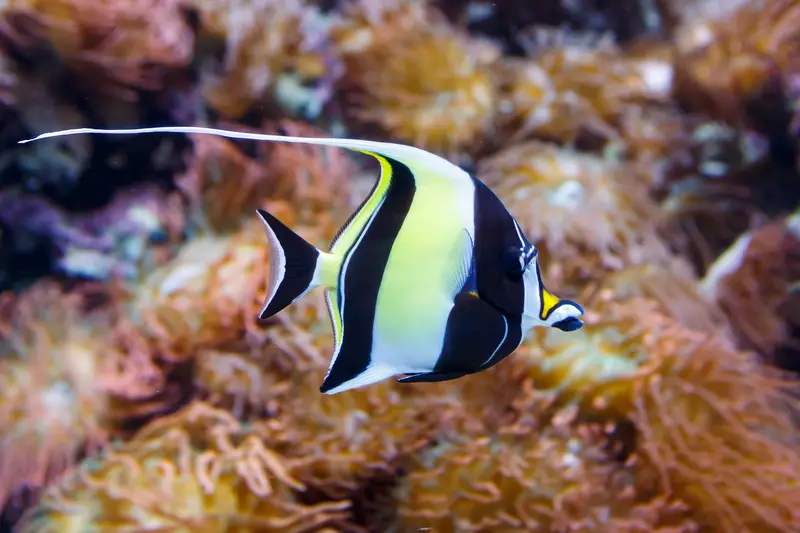
One other species you’ll certainly encounter is the popular Moorish Idol. There are plenty of them in Hawaii so there should be no excuse to not spot them, especially since they enjoy shallow water (even though they’re also active in deeper areas). Moorish Idol can grow up to 9 inches (23 centimeters). Most of the time they’re alone or in small groups, feeding of reef sponges near the ocean floor.
Their black, white and yellow vertical stripes are what catches every snorkelers eye. However, these stripes are meant to protect them from predators. They kind of “break” the fish into multiple pieces, which makes it hard for predators to determine how big this fish actually is. Especially agains a colorful background, a Moorish Idol can look much bigger than it really is. Even humans are fooled at times. Their long upper fin contributes to this protective strategy as well.
Moorish Idols eat and swim during the day and rest at night. In other words, you really can’t miss them when snorkeling.
4. Raccoon Butterflyfish
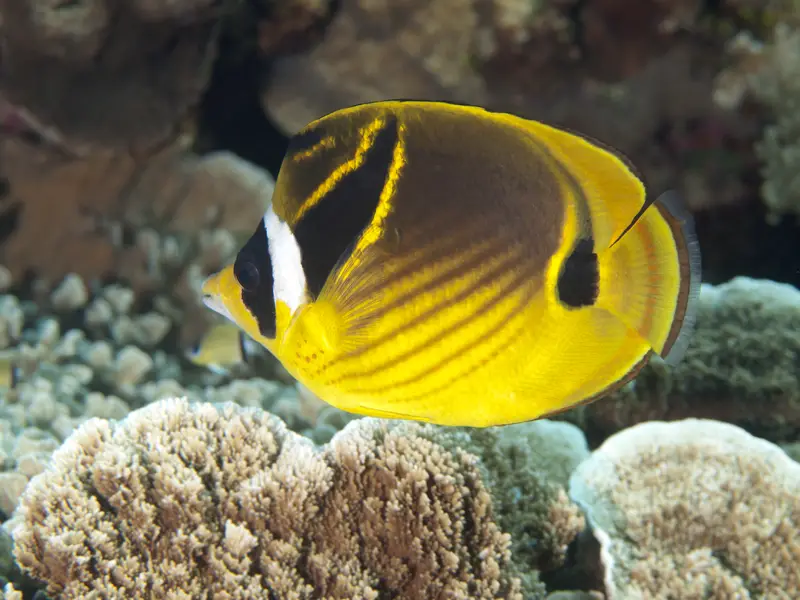
The Raccoon Butterflyfish is yet another species you can’t miss when snorkeling in Hawaii. Just like Moorish Idol, they’re part of the “Hawaiian snorkel package”. Raccoon Butterflyfish can grow up to 8 inches (20 centimeters) and are known for their typical “raccoon face mask“.
Since these fish prefer to stay close to coral reefs in shallow water, every snorkeler in Hawaii should be able to greet them. Because of their bright color they’re definitely a “pearl in the ocean”, especially when sunlight hits their skin. You really can’t miss them, especially since they enjoy to swim in pairs.
They’re active throughout the day in search of worms and algae, which makes it a piece of cake to find them.
5. Four Spotted Butterflyfish
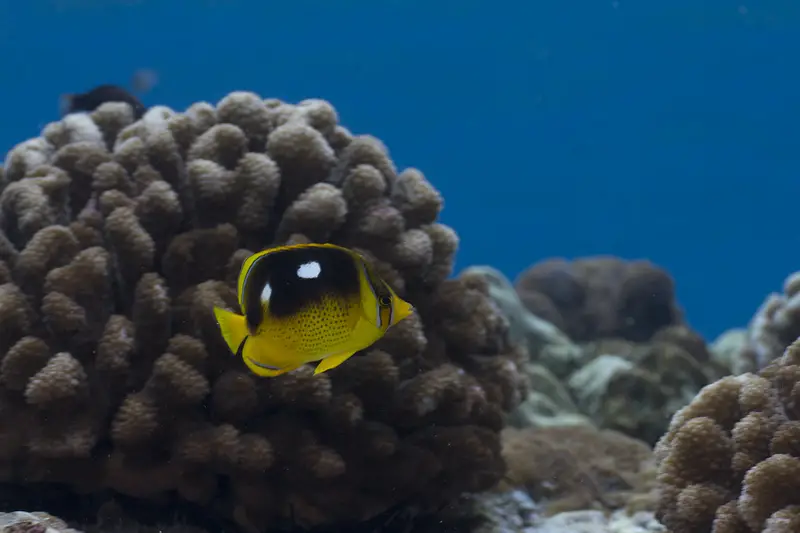
The four spotted butterflyfish is pretty similar to the raccoon butterflyfish. Well, I mean from it’s looks. As you probably guessed, these fish have 4 white spots on their bodies, 2 on each side. They grow up to 6 inches (15 centimeters), a little smaller than their raccoon lookalikes.
Four sportted butterflyfish stay close to coral reefs. That’s where they find their food. They especially enjoy polyps which they remove from the coral. However, unlike the parrotfish I recently mentioned, they leave the coral structure intact.
To me it’s fascinating that these fish stay together as a pair, as if they’re married. The males protect their territory when the women are pregnant. That’s what I call teamwork.
6. Milletseed Butterflyfish (Lemon Butterflyfish)
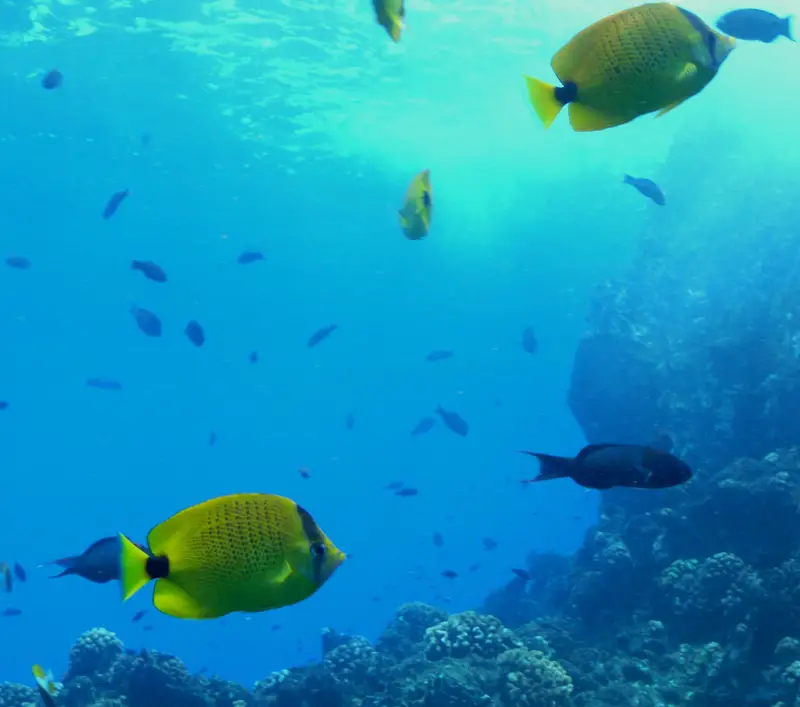
Also known as the Lemon butterflyfish, the Milletseed butterflyfish is kind of a mix between the 2 butterfly fishes I just mentioned. They have loads of little black spots, and a big one where their tail starts. Don’t worry, this is the last butterflyfish before we continue with a totally new species. However, butterflyfish are like a “welcoming committee” to Hawaiian snorkelers, so in my opinion it’s good to know how to distinguish them. They grow up to 6-7 inches (about 17 centimeters).
Native Hawaiians say that the Milletseed is the most common butterflyfish in their waters. That’s why I want you to know about this fish. In comparison to its lookalikes, this type of butterflyfish usually enjoys areas above the reef where it’s able to find plankton. But of course, they do dive down to deeper levels. The most important thing for us snorkelers is the fact that we’re able to observe them close to coral reefs.
If you’re interested, I have a separate article about yellowtail fish (worldwide).
7. Reef Triggerfish
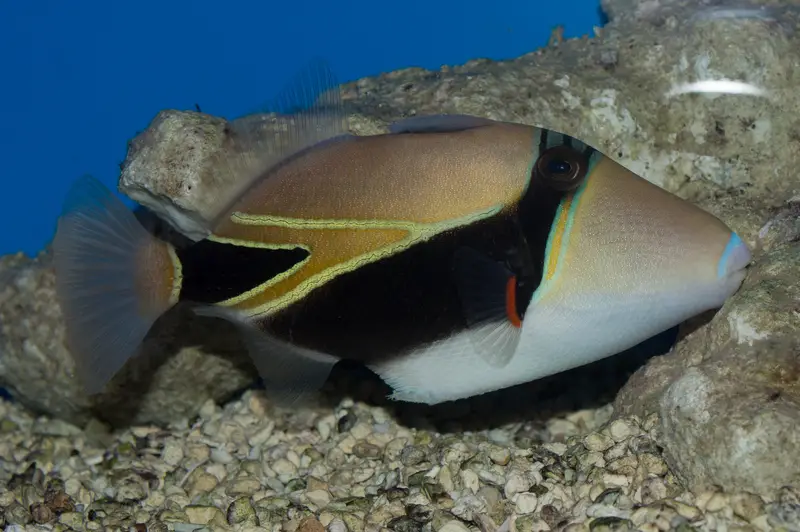
Not your friendliest neighbor, but the reef triggerfish is definitely one of a kind to observe. I’m not saying they’re angry, it’s just that they’re very territorial whenever protecting their nest. If you keep your distance, you’ll be just fine. Since they grow up to 10 inches (25 centimeters), you’ll spot them easily.
Reef triggerfish usually hang out near the reefs, close to the ocean floor. Algae, worms and the occasional snail are their favorite snacks. I often compare them with helicopters since they seem to “fly” forward or backward as if there’s no gravity. Reef triggerfish often make squeaking noises whenever they feel threatened. That’s how they try to warn other fish about nearby predators.
There are a couple of cases where people claim to be bitten by a reef triggerfish. Like I said, keep your distance, I’ve never had any problems whatsoever. I totally understand the importance of protecting a baby nest.
8. Picasso Triggerfish
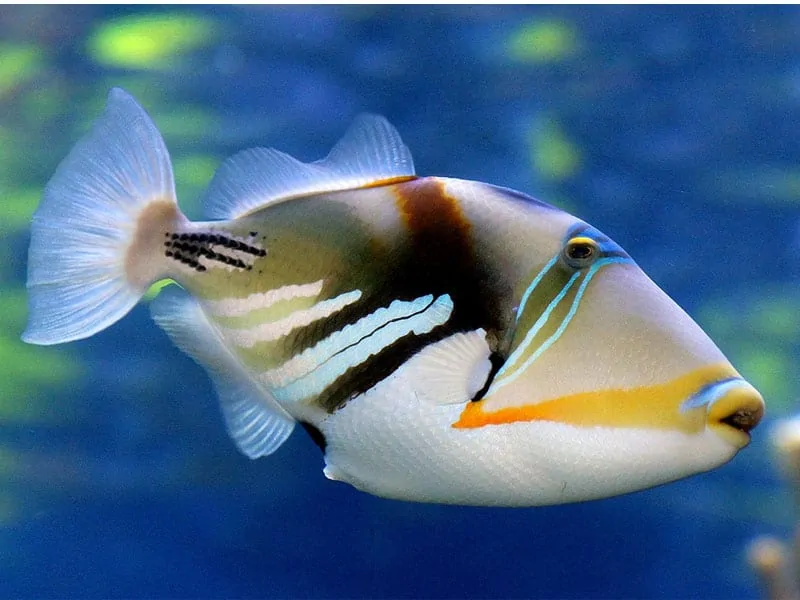
Also known as the Lagoon triggerfish, the Picasso triggerfish has a lot of similarities with the reef triggerfish I just mentioned. They can be equally protective when guarding their nests, so you should keep your distance. Picasso triggerfish grow a little bigger than their reef cousins, up to approximately 12 inches (30 centimeter).
The reference to Picasso is probably self-explanatory. It’s as if a painter decided to create his or her own version of a fish, even though it’s mother nature’s work. These fish may seem restless at times as they cruise the reefs continuously, but hey, we all need to protect our territory. Picasso triggerfish can protect one single territory for up to 8 years before moving somewhere else. You’ll find them close to sandy areas where they eat algae and invertebrates.
9. Bird Wrasse
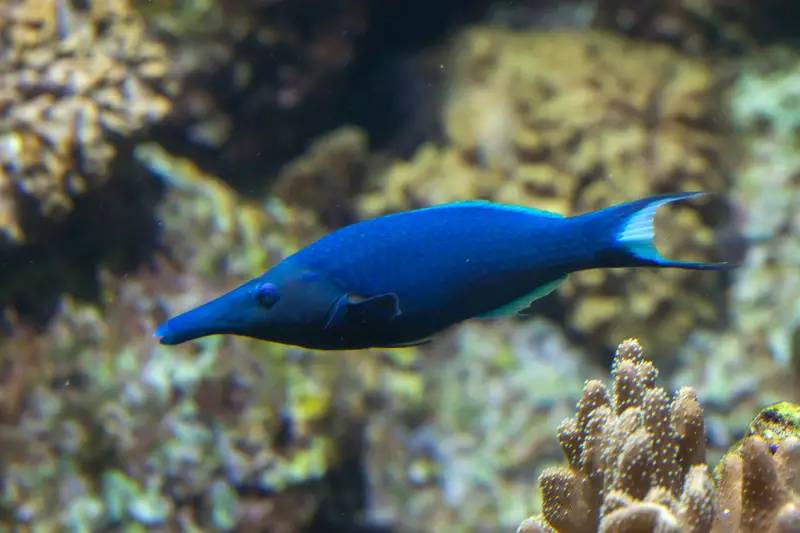
Another common and well known inhabitant of the Hawaiian waters is the wrasse family. Considering the length of this article I decided to only list 2 of them, but there are many more to research. The bird wrasse is a very common fish to spot near Hawaiian reefs, especially the shallow ones. Which is exactly what we snorkelers prefer. They grow up to 12 inches (approximately 30 centimeters).
Bird wrasse fish get their name from their “bird-looking” nose. Most females become males during their life, which also changes their color from red-grey to green-blue. If color is hard to tell, small versions of this fish are usually female and the bigger ones male. You could encounter them alone, but it’s not uncommon for them to swim in small groups. Since they enjoy to eat invertebrates from the reef, expect them to be swimming around sooner or later.
10. Saddle Wrasse
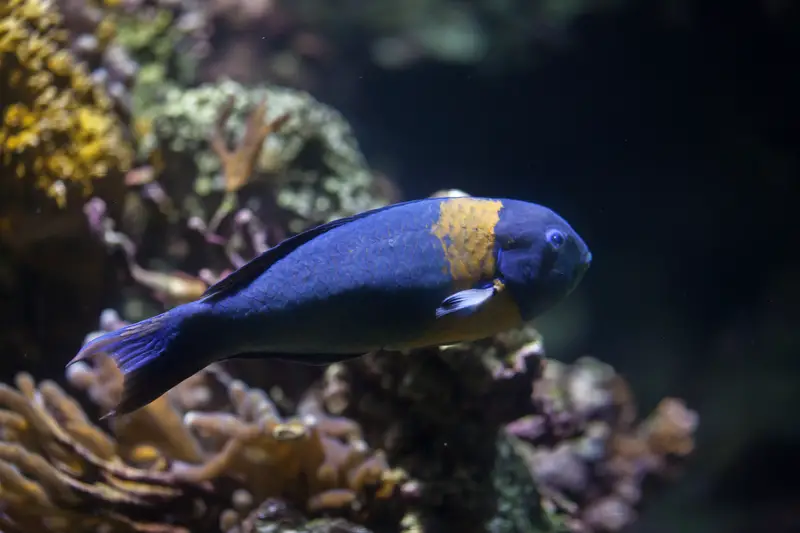
Just like bird wrasse, the saddle wrasse calls many Hawaiian reefs it’s home. Again, big chance you’ll be able to observe this species. As the name suggests, this fish can easily be recognized by its red (or orange) band between head and body. Similar to bird wrasse, the saddle wrasse is also capable to change gender, and therefore color. Younger females appear in green. They grow about the same size as bird wrasse, so 12 inches ( about 30 centimeters).
This Hawaiian reef fish is an active swimmer. They’re continuously monitoring their surroundings for food or predators. Therefore, if you see one, don’t be surprised if it suddenly disappears. It must have found a worm to eat. For us snorkelers it’s a good thing that the saddle wrasse is active during the day.
11. Yellow Tang
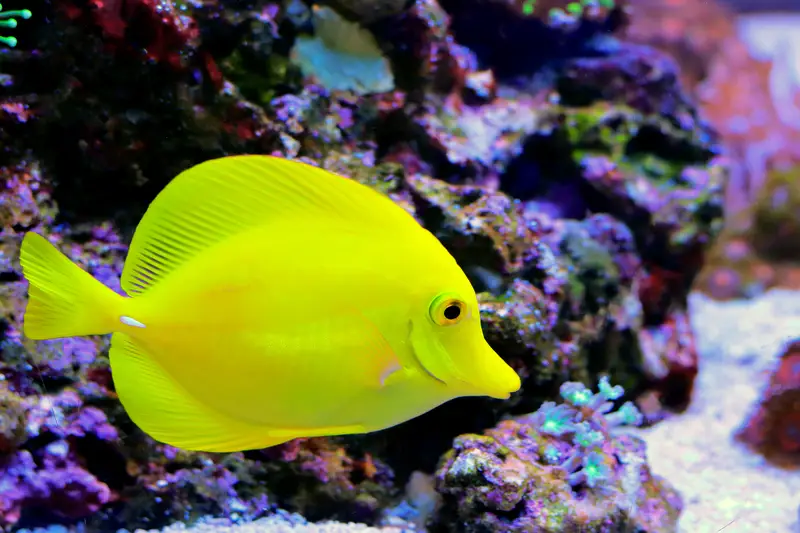
A common and easy to recognize Hawaiian fish is the yellow tang. They belong to the surgeonfish family. In my opinion you won’t find any other Hawaiian fish as yellow as these little swimmers. Well, they’re not that small actually. They can grow up to 8 inches (20 centimeters) and live for about 30 years (or even longer).
This is another Hawaiian fish that enjoys shallow water, which is ideal for snorkelers. They stay close to the reefs most of the time, often in small groups, searching for algae (their favorite meal). If you ever join a snorkel tour at night you’ll notice how these fish change their color to a darker version of yellow. As a general rule, don’t come too close and just observe. Yellow tang can cause serious injuries to humans when threatened.
12. Achilles Tang
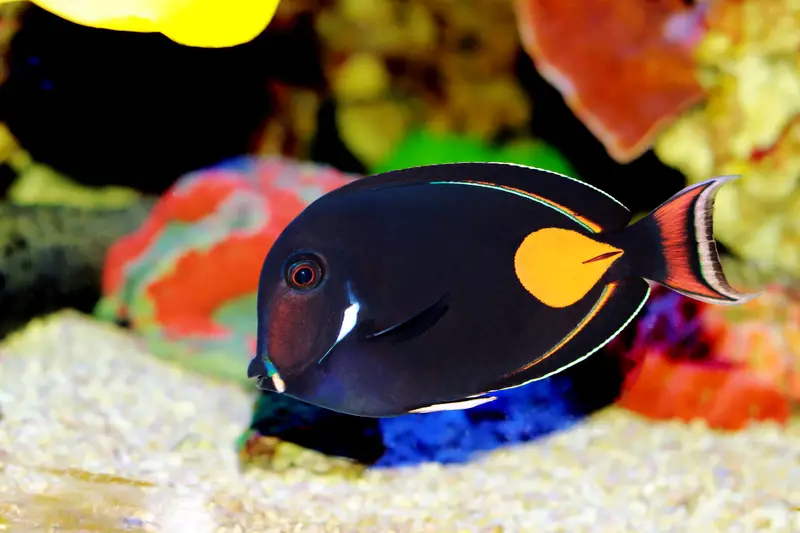
Another species within the surgeonfish family is the achilles tang. Adults can easily be recognized by their orange tail. There are a lot of similarities with the yellow tang, however, they can be a little more aggressive. Especially when it comes to territory and food. They’re usually a little bigger, growing up to 10 inches (about 25 centimeters). You’ll find them in small groups near coral reefs.
13. Convict Tang
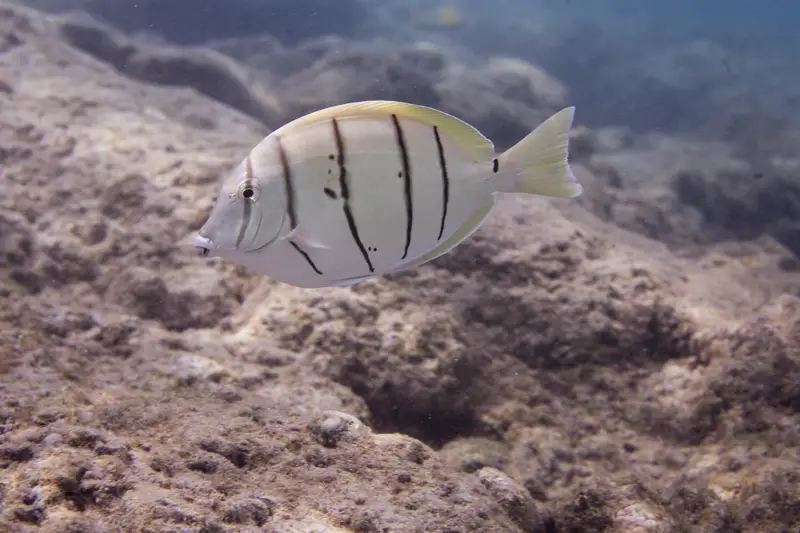
One last member of the surgeonfish family that I want to share with my readers is the convict tang. Just like yellow and achilles tang, these fish have a similar oval body. You’ll find it easy to recognize them with their black and white vertical stripes. On average, convict tang are a little smaller than yellow or achilles tang. They usually grow up to 6 inches in length (about 14 centimeters), but it’s possible to spot a few larger ones. Just like it’s family members I mentioned above, they prefer to stay close to coral reefs where they feed of algae. If you’re interested, I have a separate article where I list 10 impressive black and white fish worldwide.
14. Trumpetfish
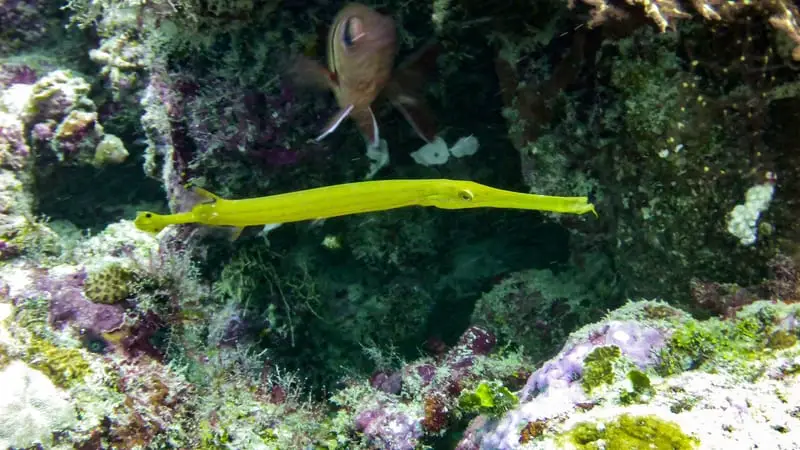
Another one of my absolute favorite Hawaiian fishes is the trumpetfish. It’s amazing how they’re able to hover the water horizontally, as if they weren’t alive. The above picture shows you a yellow trumpetfish. However, they’re able to change their color to grey (or brownish). If that’s the case, it’s easy to confuse them with a wooden stick. These fish can grow up to a stunning 36 inches (which equals about 90 centimeters). Yes, they can be big, and therefore very impressive to observe.
It might require a little time before you get to spot one. However, in my opinion, it’s definitely worth the wait. They usually hang out in shallow reefs, somewhat hidden between (or under) coral rock formations. Almost invisible fins at it’s tail allow this fish to move towards it’s pray. Once close enough, it speeds up and sucks it’s meal similar to a vacuum cleaner. One of its favorite snacks are shrimp. Unlike most of the fish I already covered in this article, trumpetfish usually swim alone.
15. White Spotted Damselfish
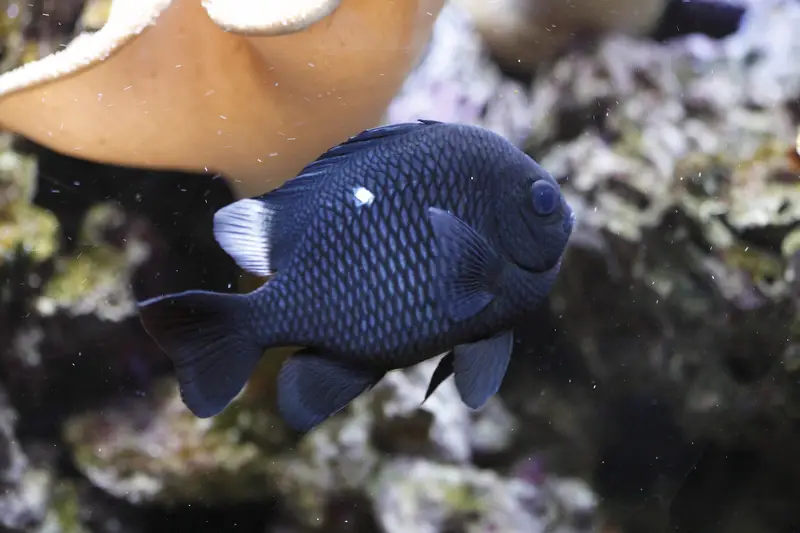
An easy to recognize Hawaiian fish is the white spotted damselfish. With one appealing white spot on each side of it’s darker body, you will definitely identify this species. One thing I like in particular is the fact that they swim in large groups, and that they all move simultaneously. It’s as if they’ve been practicing for years how to entertain a snorkeler. They grow up to 6 inches (15 centimeters) and prefer to stay close to coral reefs.
16. Blue Stripe Snapper
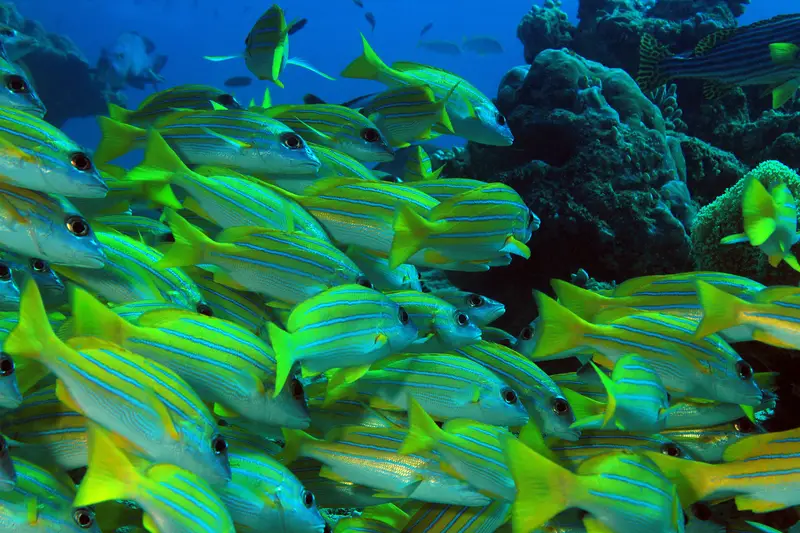
A very common fish in Hawaiian waters is the blue stripe snapper. Just like the white spotted damselfish, this is a fish you’ll get to observe in big schools. They can grow up to 16 inches (40 centimeters), but on average they’re approximately 10 inches (25 centimeters).
Blue stripe snappers obviously get their name from their horizontal blue stripes. There are 4 on each side of this fish. The rest of their bodies are mainly yellow, including the fins. When observed in schools, these Hawaiian fish can be breathtaking. You’ll find them close to corals or caves.
17. Hawaiian Squirrelfish
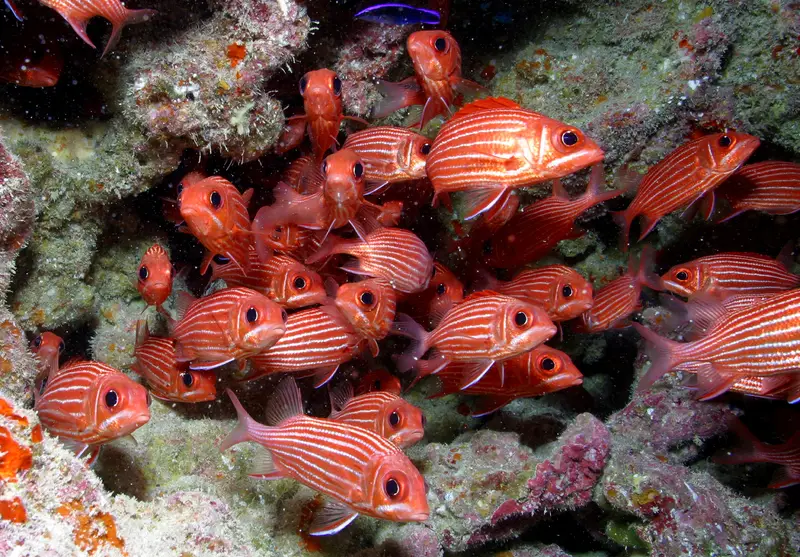
Last but not least, let me finish this list with something different. All the species I already mentioned are quite easy to spot, especially if you snorkel in various Hawaiian waters. I just thought it would be fun to end this article with a typical Hawaiian fish that’s not always easy to find: The Hawaiian squirrelfish.
Not only is this fish one of the most common species in Hawaii, it’s also unique to the islands. In other words, these fish can’t be spotted anywhere else in the world. In comparison to the other species I talked about, Hawaiian squirrelfish prefer to hide during the day. Furthermore, they usually hang out in deeper caves. However, if you’re an experienced snorkeler, who knows you’ll spot a few. Hawaiian squirrelfish grow up to about 6-7 inches (about 16 centimeters).
For any underwater photographers out there, taking a good picture of this fish can be a challenge. I share a bunch of tips and tricks in my giant guide for snorkeling with a GoPro.
Final Thoughts
Become A Reef Friendly Visitor
I’ll keep this short and sweet, but the Hawaiian fish deserve this simple message: Please, if you use sunscreen, go for reef friendly sunscreen. I cover them in my article about UV protection for snorkelers.
Want To Learn More?
As I said in the beginning of this article, the Hawaiian marine life consists of hundreds of fish species. Marinelifephotography is a website that covers loads of these Hawaiian fish, including pictures.
If you had enough of Hawaiian reef fish, and if you’re up for some fun, consider to also read my 25 fun and surprising facts about fish.
